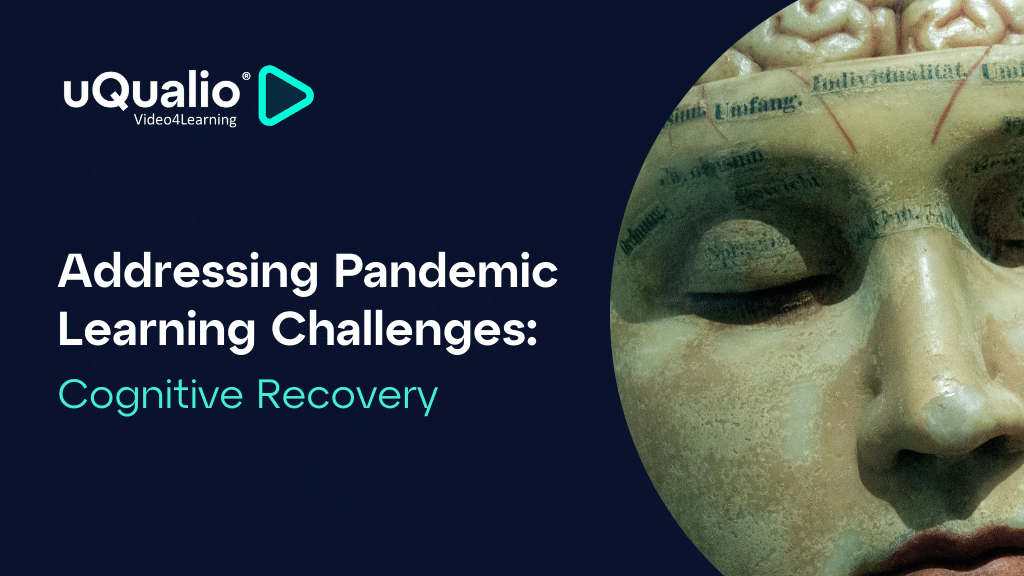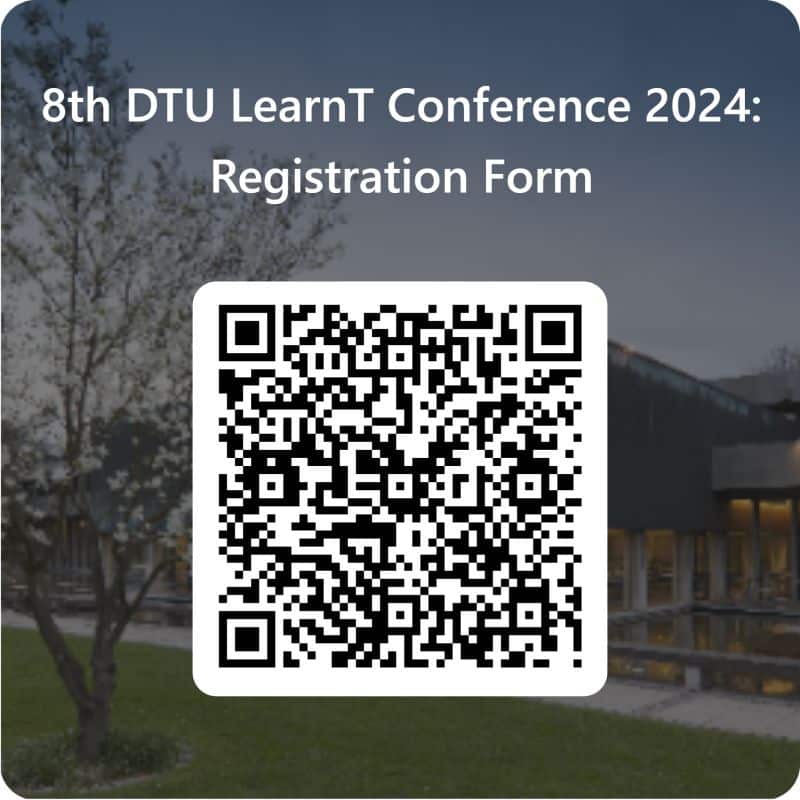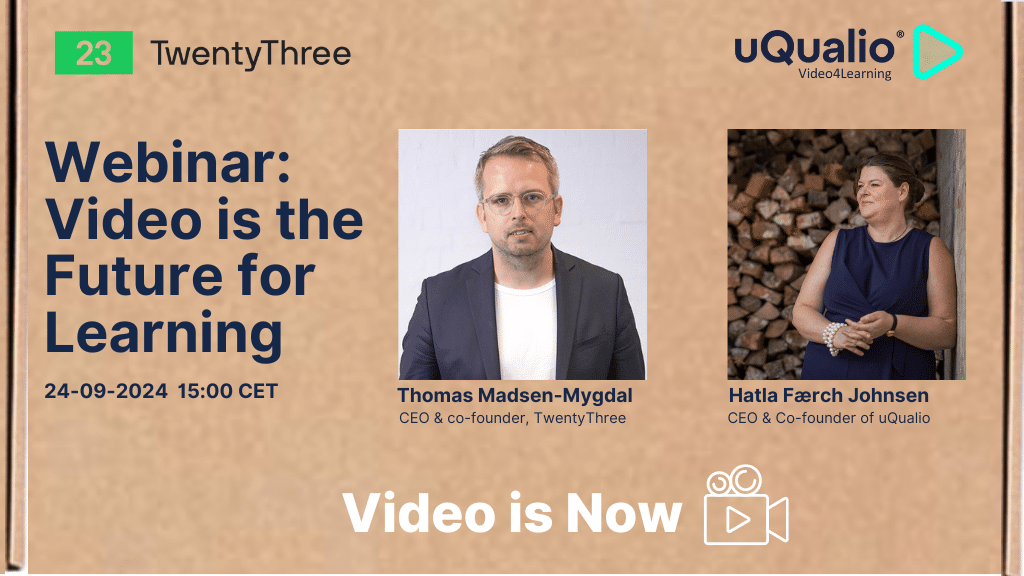In the fast-paced world of Software as a Service (SaaS), effective customer onboarding is crucial for ensuring customer satisfaction, retention, and overall success. Traditional onboarding methods often fall short in engaging and educating users, leading to high churn rates and low adoption. Enter multi-modal learning—a dynamic approach that leverages various learning modalities to create a more engaging and effective onboarding experience. This article explores how multi-modal learning can drive SaaS growth by enhancing customer onboarding through blended learning environments.
The Struggles of Traditional Customer Onboarding
Traditional customer onboarding methods often face several challenges, such as lack of engagement, inefficiency, and inadequate personalization. These challenges can lead to low adoption rates, high churn rates, and poor customer satisfaction. For SaaS companies, effective onboarding is crucial for ensuring customer success and retention.
Common challenges of traditional onboarding include the use of static and unengaging materials, time-consuming processes, and a one-size-fits-all approach. These methods fail to capture the interest of users and do not cater to individual learning preferences. The impact on customer success is significant, with low adoption rates and high churn rates being common outcomes.
Case studies of companies facing onboarding challenges highlight the lessons learned and improvements made. For example, a SaaS company that relied on traditional onboarding methods experienced high churn rates and low user engagement. By transitioning to a multi-modal learning approach, they were able to improve engagement, retention, and overall customer satisfaction.
Understanding Multimodal Learning: A Comprehensive Guide
Multimodal learning is an educational approach that incorporates multiple methods of learning to cater to different learning styles. It combines visual, auditory, kinesthetic, and reading/writing modalities to create a more comprehensive and engaging learning experience. This approach is particularly effective in modern education and training, where diverse learner needs must be met.
Visual learning involves the use of images, videos, and infographics to convey information. Auditory learning leverages podcasts, audio recordings, and lectures. Kinesthetic learning focuses on hands-on practice and simulations, while reading/writing learning includes manuals, guides, and note-taking. By integrating these modalities, multimodal learning enhances engagement, retention, and knowledge application.
Implementing multimodal learning involves combining various learning modalities, personalizing learning paths, and utilizing technology and tools such as Learning Management Systems (LMS) and interactive content creation tools. Successful implementations in various industries have shown measurable outcomes and benefits, making multimodal learning a valuable approach for SaaS onboarding.
Exploring Different Types of Multimodal Learning Techniques
Multimodal learning techniques are diverse and cater to different learning preferences. Visual learning techniques include videos, infographics, diagrams, and charts. These methods are highly effective in conveying complex information in an easily digestible format. Auditory learning techniques, such as podcasts, audio recordings, webinars, and lectures, cater to those who learn best through listening.
Kinesthetic learning techniques involve hands-on practice, simulations, role-playing, and interactive activities. These methods are crucial for experiential learning, allowing learners to apply knowledge in practical scenarios. Reading/writing learning techniques include manuals, guides, note-taking, and summarizing, which help reinforce learning through written content.
Case studies from various industries demonstrate the successful implementation of these techniques, highlighting measurable outcomes and benefits. For example, a technology company might use a combination of video tutorials, interactive simulations, and quizzes to onboard new users effectively.
Real-World Examples of Multimodal Learning in Action
Multimodal learning has been successfully implemented across various industries, showcasing its effectiveness in enhancing customer onboarding. In the technology industry, a leading SaaS company faced challenges in engaging new users. By implementing multimodal learning through interactive video tutorials, quizzes, and hands-on simulations, they significantly improved user engagement and retention.
In the healthcare industry, a medical device company used multimodal learning to train healthcare professionals on new equipment. They combined video demonstrations, interactive simulations, and detailed manuals to ensure comprehensive training. The result was a higher adoption rate and improved user confidence in using the equipment.
In the education sector, a university implemented multimodal learning to enhance online courses. By incorporating videos, podcasts, interactive activities, and reading materials, they created a more engaging and effective learning experience for students. These real-world examples highlight the versatility and impact of multimodal learning in different contexts.
The Top Benefits of Adopting a Multimodal Learning Approach
Adopting a multimodal learning approach offers numerous benefits for SaaS onboarding. One of the primary advantages is enhanced engagement and retention. By catering to diverse learning styles, multimodal learning ensures that all users can engage with the content in a way that suits them best. Interactive and engaging content, such as videos, quizzes, and simulations, keeps learners interested and motivated.
Another significant benefit is improved knowledge retention and application. Multimodal learning reinforces information through multiple modalities, making it easier for learners to remember and apply what they have learned. This approach also offers flexibility and accessibility, allowing users to learn at their own pace and access content from any device, anytime, anywhere.
Case studies from companies that have adopted multimodal learning demonstrate measurable outcomes and benefits. For instance, a SaaS company that implemented multimodal learning saw a 30% increase in user engagement and a 25% reduction in support tickets. Best practices for implementation include tailoring content to learner needs, ensuring accessibility and inclusivity, and continuously improving and updating the learning materials.
Potential Drawbacks of Multimodal Learning Styles and How to Overcome Them
While multimodal learning offers many benefits, it also comes with potential drawbacks. One common challenge is the complexity and resource intensity of creating and maintaining diverse learning materials. To overcome this, companies can streamline content creation processes and leverage technology to automate certain tasks.
Another potential drawback is the risk of cognitive overload, where learners may feel overwhelmed by too much information presented in various formats. Balancing cognitive load by breaking down content into manageable chunks and providing clear instructions can help mitigate this issue. Additionally, measuring the effectiveness of multimodal learning can be challenging. Implementing effective measurement tools, such as LMS analytics and feedback forms, can provide valuable insights into learner progress and content effectiveness.
Case studies of companies that have successfully addressed these challenges offer valuable lessons and best practices. For example, a company that faced cognitive overload issues simplified their content and provided clear learning paths, resulting in improved learner satisfaction and outcomes.
Proven Strategies for Effective Multimodal Learning
Effective multimodal learning requires a strategic approach that combines various learning modalities, personalizes learning paths, and utilizes interactive and engaging content. Combining visual, auditory, and kinesthetic modalities ensures that all learners can engage with the content in a way that suits them best. For example, a SaaS company might use video tutorials, podcasts, and hands-on simulations to cater to different learning preferences.
Personalizing learning paths is another crucial strategy. By tailoring content to individual learner needs and preferences, companies can create a more relevant and effective learning experience. Tools and technologies such as adaptive learning systems and LMS can help personalize learning paths and track learner progress.
Utilizing interactive and engaging content, such as videos, simulations, and quizzes, keeps learners interested and motivated. Continuous improvement and updates based on learner feedback and data ensure that the learning materials remain relevant and effective. Case studies of successful multimodal learning implementations highlight the importance of these strategies in achieving positive outcomes.
Enhancing Customer Satisfaction with Interactive Training
Customer satisfaction is a critical factor in the success of SaaS companies. Effective training plays a vital role in ensuring customer satisfaction by helping users understand and utilize the product effectively. Interactive training methods, such as video tutorials, hands-on practice, and quizzes, can significantly enhance the training experience.
Video tutorials and demonstrations offer visual learning benefits, making it easier for users to grasp complex concepts. Hands-on practice and simulations provide experiential learning opportunities, allowing users to apply their knowledge in real-world scenarios. Quizzes and assessments reinforce learning and provide immediate feedback, helping users identify areas for improvement.
Case studies of companies that have improved customer satisfaction through interactive training highlight the measurable outcomes and benefits. For example, a SaaS company that implemented interactive training saw a 20% increase in customer satisfaction scores and a 15% reduction in support tickets. Best practices for implementing interactive training include tailoring content to customer needs, ensuring accessibility and inclusivity, and continuously improving and updating the training materials.
How Multi-Modal Learning Accelerates Product Mastery
Product mastery is the ability of users to fully understand and utilize a product’s features and functionalities. In the SaaS industry, achieving product mastery is crucial for customer success and retention. Multi-modal learning techniques can accelerate product mastery by catering to different learning styles and reinforcing knowledge through multiple modalities.
Visual learning techniques, such as videos and infographics, provide clear and concise explanations of product features. Kinesthetic learning through hands-on practice and simulations allows users to apply their knowledge in practical scenarios. Auditory learning through podcasts and webinars offers an alternative way to absorb information.
Case studies of companies that have achieved product mastery through multi-modal learning highlight the challenges faced and solutions provided. For example, a SaaS company that used a combination of video tutorials, interactive simulations, and webinars saw a significant improvement in user proficiency and confidence. Measuring the impact on product mastery involves tracking key performance indicators (KPIs) such as user engagement, knowledge retention, and performance improvements.
Engaging and Interactive Quizzes to Test Your Knowledge
Quizzes play a crucial role in the learning process by assessing learner understanding and reinforcing knowledge. They offer several benefits for retention and engagement, making them an essential component of multi-modal learning. Different types of quizzes, such as multiple-choice, true/false, and open-ended questions, cater to various assessment needs.
Multiple-choice quizzes are effective for testing factual knowledge and providing immediate feedback. True/false quizzes are useful for assessing basic understanding and reinforcing key concepts. Open-ended questions encourage critical thinking and deeper reflection on the material.
Designing effective quizzes involves aligning them with learning objectives, providing immediate feedback, and ensuring accessibility and inclusivity. Case studies of successful use of quizzes in various industries demonstrate their measurable outcomes and benefits. For example, a SaaS company that incorporated quizzes into their onboarding process saw a 25% increase in knowledge retention and a 20% improvement in user engagement.
Learning Science: The Benefits of Video
Video learning offers numerous benefits from a learning science perspective. Cognitive theories such as dual coding theory and cognitive load theory explain why video is an effective learning tool. Dual coding theory suggests that combining visual and verbal information enhances memory and understanding. Cognitive load theory emphasizes the importance of managing cognitive load to prevent overload and improve learning outcomes.
Video learning provides visual and auditory stimulation, making it easier for learners to absorb and retain information. Interactive video elements, such as quizzes and simulations, further enhance engagement and retention. Research findings and case studies support the effectiveness of video learning in various contexts.
For example, a study found that viewers retain 95% of a message when they watch it in a video compared to 10% when reading it in text. Case studies of successful video learning implementations highlight the impact on engagement and retention. For instance, a SaaS company that used video tutorials for customer onboarding saw a significant increase in user engagement and satisfaction.
Measuring the Impact of Multi-Modal Learning on ROI
Measuring the return on investment (ROI) of multi-modal learning is crucial for organizations to understand its impact and justify the investment. Key metrics for measuring ROI include engagement and participation rates, knowledge retention and application, and performance improvements.
Tools and methods for measurement include Learning Management Systems (LMS), surveys and feedback forms, and performance tracking tools. LMS analytics provide valuable insights into learner progress and content effectiveness. Surveys and feedback forms help gather qualitative data on learner satisfaction and areas for improvement. Performance tracking tools measure the impact of learning on job performance and productivity.
Case studies of organizations successfully measuring ROI highlight the challenges faced and solutions provided. For example, a SaaS company that implemented multi-modal learning tracked engagement rates, knowledge retention, and performance improvements, resulting in a 30% increase in ROI. These examples demonstrate the importance of measuring the impact of multi-modal learning on organizational success.
Why Engagement is Critical for SaaS Adoption
Engagement is a critical factor for SaaS adoption and customer success. Engaged users are more likely to fully utilize the product, leading to higher satisfaction and retention rates. Strategies for enhancing engagement include interactive content and activities, personalized learning paths, and gamification techniques.
Interactive content, such as videos, quizzes, and simulations, keeps learners interested and motivated. Personalized learning paths tailor the content to individual learner needs and preferences, making the learning experience more relevant and effective. Gamification techniques, such as rewards and leaderboards, add an element of fun and competition, further enhancing engagement.
Measuring engagement involves tracking key metrics and indicators, such as user activity, completion rates, and feedback. Tools for tracking engagement include LMS analytics and feedback forms. Case studies of companies successfully enhancing engagement highlight the measurable outcomes and benefits.
Key Benefits of Blended Learning for Customer Onboarding
Blended learning offers several key benefits for customer onboarding in the SaaS industry. One of the primary advantages is enhanced engagement and retention. By combining online and offline learning, blended learning ensures that users can engage with the content in multiple ways, making it more interesting and effective.
Flexibility and accessibility are other significant benefits of blended learning. Users can access digital content from any device, anytime, anywhere, allowing them to learn at their own pace. Personalized learning experiences tailor the content to individual learner needs and preferences, making the learning experience more relevant and effective.
Case studies of companies benefiting from blended learning highlight the measurable outcomes and benefits. Best practices for implementation include tailoring content to customer needs, ensuring accessibility and inclusivity, and continuously improving and updating the learning materials.
Improving Onboarding Success Rates through Blended Learning
Onboarding success rates are a critical factor for SaaS companies, as they directly impact customer success and retention. Blended learning can significantly improve onboarding success rates by combining online and offline learning, utilizing various learning modalities, and personalizing learning paths.
Combining online and offline learning involves integrating digital content, such as videos and quizzes, with in-person training sessions and hands-on practice. This approach ensures that learners can engage with the content in multiple ways, enhancing retention and application. Utilizing various learning modalities, such as visual, auditory, and kinesthetic, caters to different learning preferences and reinforces knowledge through multiple channels.
Strategies for Effective Blended Learning Implementation
Blended learning combines online and offline learning to create a more comprehensive and flexible learning experience. For SaaS onboarding, blended learning offers several benefits, including enhanced engagement, flexibility, and personalized learning experiences. Key strategies for effective implementation include combining various learning modalities, personalizing learning paths, and utilizing technology and tools.
Combining online and offline learning involves integrating digital content, such as videos and quizzes, with in-person training sessions and hands-on practice. This approach ensures that learners can engage with the content in multiple ways, enhancing retention and application. Personalizing learning paths tailors the content to individual learner needs and preferences, making the learning experience more relevant and effective.
Tools and technologies that support blended learning include Learning Management Systems (LMS), interactive content creation tools, and communication and collaboration platforms. Case studies of successful blended learning implementations highlight the challenges faced and solutions provided. For example, a SaaS company that implemented blended learning saw a significant improvement in user engagement and satisfaction.
How uQualio Supports Multi-Modal Learning for SaaS Onboarding Success
uQualio is a powerful platform that supports multi-modal learning for SaaS onboarding success. The platform offers a range of features designed to enhance engagement, retention, and customer satisfaction. One of the key features is video-based learning, which includes interactive video content that makes learning more engaging and effective.
uQualio also offers quizzes and assessments to reinforce learning. Various types of quizzes, such as multiple-choice, true/false, and open-ended questions, help assess learner understanding and provide immediate feedback. Interactive elements, such as simulations and practice exercises, allow learners to apply their knowledge in practical scenarios. Real-time feedback mechanisms further enhance the learning experience.
Case studies of successful implementations in various industries demonstrate the effectiveness of uQualio in supporting multi-modal learning. For example, a SaaS company that used uQualio for customer onboarding saw a significant increase in user engagement and retention. The platform’s features, such as interactive videos and quizzes, played a crucial role in achieving these outcomes.
Achieve Effective & Affordable Video Training
– uQualio is an award-winning, easy-to-use, all-in-one NextGen LMS software for any types of online video training.












